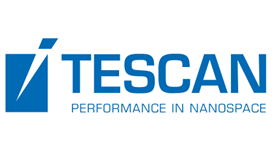In situ experiments in the SEM give the capability to perform heating and mechanical testing inside the chamber using dedicated heating & tensile stages. It helps understanding phenomena ranging from precipitation and phase transformation, to diffusion and segregation in a large range of materials like metals, ceramics, composites, and polymers. It allows metallurgists and material scientists to develop new materials with better properties.
Energy Dispersive Spectroscopy (EDS) is the routine technique in SEM to analyse elemental distribution and composition within a sample. Using EDS at high temperature comes with technical challenges like the emission of visible and IR radiation which can severely degrade the EDS detector performance. Oxford Instruments recently developed a unique solution that unlocks high temperature EDS analysis in the SEM enabling direct observation of chemical changes at high temperature.
This webinar is organised in collaboration with the University of Manchester, Tescan and NewTec. Together they have partnered to develop a state-of-the-art automated In situ SEM system (TANIST) equipped with Oxford Instruments analytical equipment (EDS and EBSD). In this webinar you will see how this system makes in situ testing easier to use, faster to setup and how it increases throughput and data quality.
We will be joined by Dr Jack Donoghue, Experimental Officer at the University of Manchester, to present the TANIST platform and the latest developments for in situ SEM. We will also be joined by Dr Albert Smith, R&D Application Engineer at TESCAN, to show the TANIST system in action. We will then see two examples of using EDS at high temperature to understand materials properties in real life examples.
In this webinar, you will learn about:
- The importance of automated in situ testing in the SEM and how it works
- The challenges and solutions for EDS in situ heating in the SEM
- How in situ heating with EDS and EBSD can be used in real examples to better understand a material’s properties
Watch on demand





